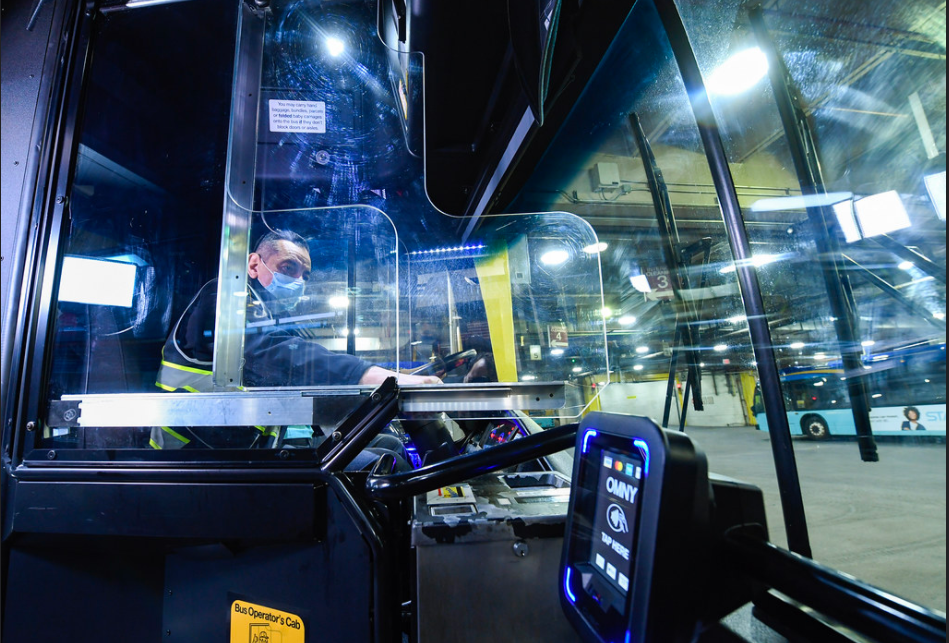Sturdy, protective sliding partitions installed on 4,800 local buses

A bus driver sits behind a see-through polycarbonate partition on an MTA bus. MTA photo by Marc Hermann
Express buses are next, says MTA
From Brooklyneagle.com
MTA New York City Transit on Tuesday announced that it has completed the installation of protective see-through polycarbonate sliding partitions, similar to Plexiglas but chemically different, on all 4,800 local buses across the five boroughs.